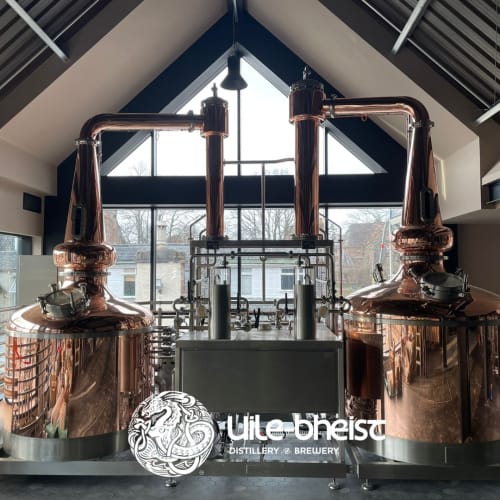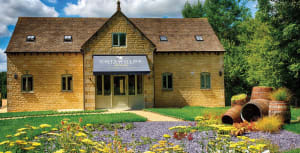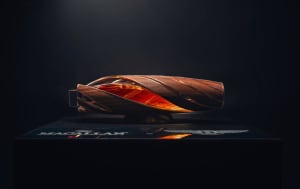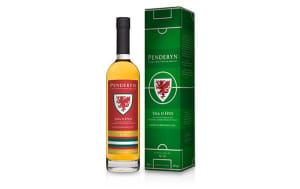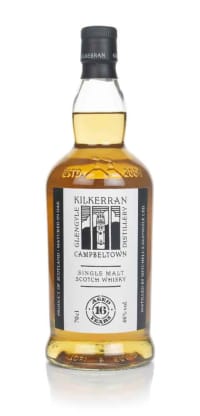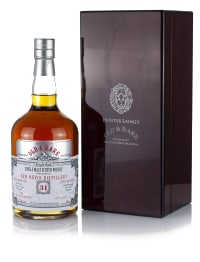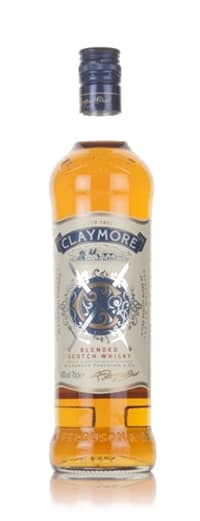The first new distillery in Inverness, Scotland, in 130 years just had its doors opened.
The first distillery to open in the city since 1892 is the Uile-bheist Distillery, which is Gaelic for "monster," and its first barrels were filled only a few days afterwards.
“Our scale is craft, not volume. Our clean energy process, using shallow water wells, has been described as exemplary. It’s great to bring whisky distilling and brewing back to the city but we also wanted a high level of design specification throughout, from the stills to the dramming area, to the tap room. If people have travelled from New York or Tokyo, or if they’ve seen a lot of other distilleries, we want them to come here and think ‘I really like what they’ve done here.’ Everything is photogenic.” ~ Jon Erasmus, owner of Uile-bheist Distillery
The River Ness provides both water and energy for Uile-whiskey bheist's production through a district heating system that employs shallow water wells to power heat pumps. The sole grid need is energy, which is partially supplied by the glass-fronted building's rooftop solar arrays. Fluorescent lighting is used to purify the water.
“We are using an efficient set-up which effectively ‘shares’ the equipment up to a point in the initial process, with some subtle differences in recipe and process. Thereafter, the processes for the craft beer and the whisky obviously differ significantly. With our whisky, we are looking to forge our own path. We are not going to bind ourselves to traditions of the 1800s. We want to be a little experimental. Basically, we will release the first whisky only when we are proud of it and feel it truly represents the brand.” ~ Master Brewer Bruce Smith
To create their monster theme, Uile-bheist hired Melbourne-based pop culture painter Ken Taylor, who has created artwork for Jack White, The Pixies, and Pearl Jam. The walls of the tap room and tour space will be covered with elaborate works by the designer. Up to 500–600 casks of Highland Single Malt are planned to be produced annually by Uile-bheist during Phase 3 of development. On-site brewing will produce about 350,000 litres of craft beer per year, which will be piped to their guest tap area, which is close to the brewing floor. A limited "Discovery" tour program is currently planned, with a full hourly tour schedule beginning on April 1.
The History Of The Inverness Malting Hub
Several of the greatest malting plants in Scotland were situated in or around Inverness, which served as a significant centre for the manufacture of malt whiskey. The optimum setting for cultivating barley, the primary component of whiskey, was offered by the lush farmland of the Moray Firth and the adjacent hills.
Several small-scale distilleries in the Highlands and Islands relied on neighbourhood maltsters to provide them with malted barley throughout the 18th and 19th centuries. These maltsters would take the unprocessed barley and turn it into malt, a crucial component in the production of whiskey. Due to its strategic position and easy access to transportation, Inverness developed into a significant centre for the malting industry, with several large-scale malting plants being built there.
The Glen Ord Maltings, one of the biggest maltings in Scotland, was founded in 1838 and is among the most well-known of these establishments. Many of the largest whiskey distilleries in the Highlands, including Glen Ord, Glenmorangie, and Dalmore, received malt from the Glen Ord Maltings.
The number of small-scale maltsters in the area decreased as a result of the consolidation and modernization of many of the major malting plants in the Inverness area during the 20th century. Although there are currently very few maltsters in the Inverness area, the numerous excellent whiskies made there nevertheless bear the mark of the city's former prominence as a malting centre.
While there are presently no whiskey distilleries inside the city borders of Inverness, the area has historically housed a number of distilleries, giving the city a rich history of whisky manufacturing. Here are a few examples:
- The Inverness Distillery was founded in 1834 by a local businessman by the name of Alexander Anderson. It was noted for manufacturing a variety of whiskies, notably the Old Inverness brand, and was situated close to the city centre on the banks of the River Ness. Early in the 20th century, the distillery stopped producing, and it was finally destroyed.
- Small-scale distillery Millburn was situated in the community of Chapletown on the outskirts of Inverness. The company, which was established in 1807, manufactured a variety of whiskies, including a peated malt that was well-liked throughout the Victorian era. The distillery was finally dismantled after it shut down in 1985.
- Small-scale distillery Glen Mhor was situated close to the banks of the River Ness in the heart of Inverness. The company, which was established in 1892, produced a variety of whiskies, including a strongly peated malt that gained popularity in the middle of the 20th century. In the years after the distillery's closure in 1983, the structures have been transformed into opulent residences.
Although these distilleries are no longer in use, their heritage is still there in the numerous excellent whiskies now made in the Inverness region.

